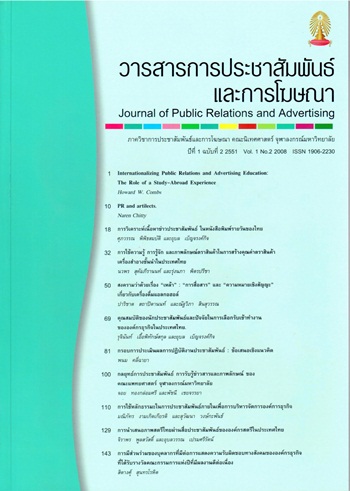การใช้หลักธรรมะในการประชาสัมพันธ์ภายในเพื่อการบริหารจัดการองค์การธุรกิจ
Main Article Content
Abstract
The purposes of this research were to study (1) the application of dharma in internal public relations for business organization management ; (2) the perception and knowledge of dharma information, attitude of employees towards public relations on dharma and dharma practice to their work, and their daily life in business organization ; (3) the relationship between the perception and knowledge of dharma information, attitude of employees towards public relations on dharma and dharma practice to their work, and their daily life in business organization. The research methodology was divided into 2 parts. Part 1, a qualitative approach was used. To collect the data, in-depth interviews were used with top executives and internal public relations administrators from three companies. They were (1) Thonglor Benze Co,Ltd. (2) DC Consultants and Marketing Communication Co,Ltd. (3) Tawana Hotel Co,Ltd. Part 2, was using a quantitative approach. To collect the data, the questionnaires were administered with the total 261 employees from the 3 companies under study. SPSS for Windows program were used for data processing. The findings were as follows ; Part 1 There were five strategies of internal public relations in applying dharma to business organization management. They were (1) building correct awareness and understanding, (2) building dharma culture in the organization, (3) sending a message by reliable persons, (4) emphasizing activities as principal, (5) building formal and informal channel of communication according to public relations process beginning from fact finding, planning, communicating, and evaluating. Part 2 (1) Most of employees knew dharma information from their supervisors. (2) Most of employees from the three companies had dharma knowledge about the definitions of morality, the four paths of accomplishment and the sublime states of mind respectively. (3) The attitude of the employees towards public relations on dharma was at positive level. Most of them trusted in merit and sin. (4) The employees practiced dharma to their work, and their daily life at high level. They mostly practiced faithfulness to their family and organization. (5) There was no correlation between perception of dharma information and attitude towards public relations on dharma. (6) There was no correlation between perception of dharma information and dharma practice of employees. (7) There was no correlation between dharma knowledge and dharma practice of employees. (8) Attitude towards public relations on dharma was positively correlated with dharma practice of employees. relations on dharma was positively correlated with dharma practice of employees.


